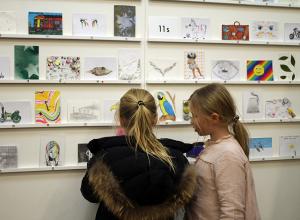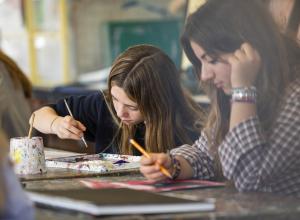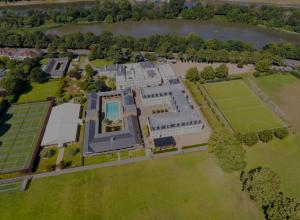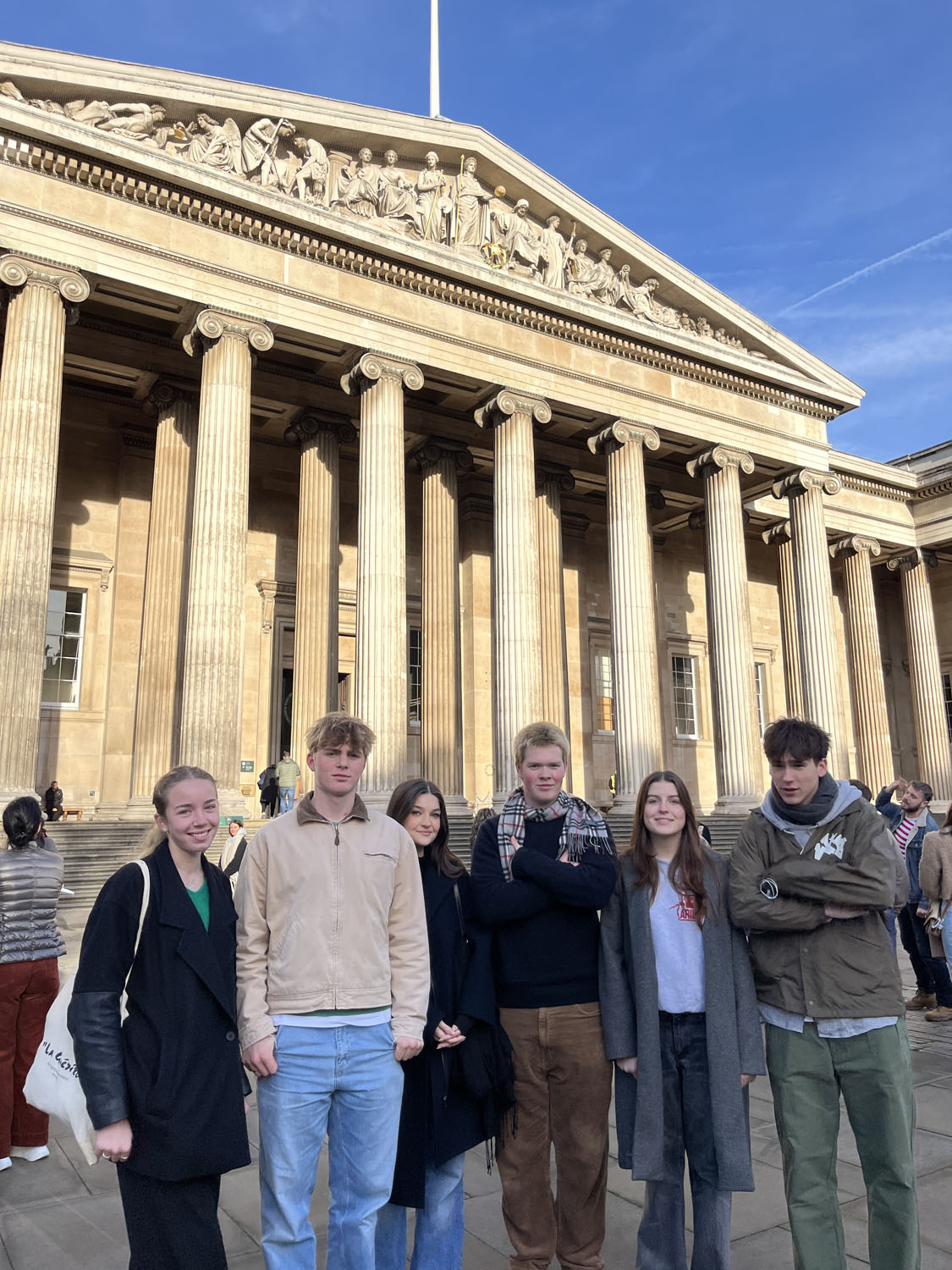
Are the Benin Bronzes and the Parthenon Marbles stolen treasures that should be repatriated? Harrodian's Art History students respond to an exhibition that aims to ask awkward questions of the visitor and the British Museum itself.
In December, Upper Sixth History of Art students visited the British Museum in order to see several case studies from the A level course first hand, and to learn about the colonial contexts surrounding certain objects in the collection. We specifically visited the Benin plaques in the Africa Gallery and the Hew Locke exhibition, ‘What have we here?’ which questioned the colonial histories of the British Museum collection. This visit sparked a variety of opinions and ideas for the students, who have collaborated on writing this exhibition review.
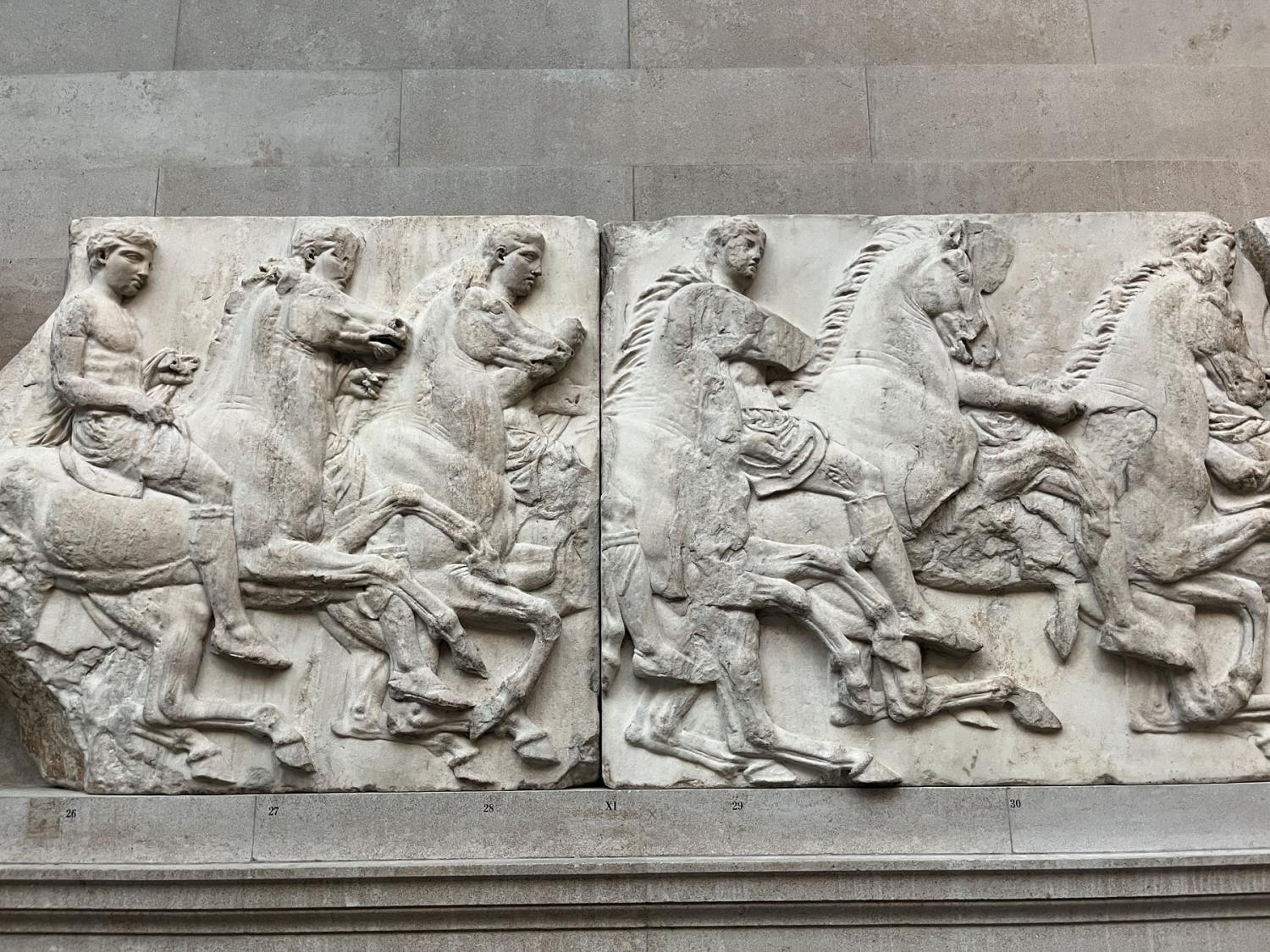
The first thing we did was visit two artworks under heavy controversy. Both the Benin Bronzes and the Parthenon Marbles are wanted back in their home countries of Nigeria and Greece respectively. This question of repatriation was central for us to consider on our visit to the museum. In particular, the Benin plaque titled ‘Facade of the Royal Palace’ is one of the case studies in our A level course.
Millie writes:
The Benin Bronzes come from Benin City, which is an historic capital now in Nigeria. In 1897, British forces captured Benin City and took thousands of objects with ceremonial and ritual importance back to the UK. The Benin Bronzes are a group of sculptures, including cast relief plaques, that were made from the 1500s onwards. The Benin Bronzes provide an important historical record of the Kingdom of Benin as well as representing the kings and queens of the Edo people. They were commissioned by the Oba (the ruler) to decorate the Benin Royal Palace and carried immense status due to their material, brass (the collection is in fact erroneously known as the Benin ‘bronzes’).

Vera writes:
The Benin Bronzes are arranged in a linear structure covering the wall. They display the native people of the Benin Empire as well as the Portuguese who worked hand in hand with them through trade, however the scuffs and imperfections of the plaques suggest their lifetime and their own travels. The plaques are tattered and misshapen, there are chips and evident signs of aging or mistreatment, alluding to the story of the bronzes and their travel from Benin City in what is now Nigeria to Europe, and now the British Museum. The organisation of these works in the British Museums is different to their original formation, where they were placed around the pillars of the Oba’s palace in order to convey his power and wealth. The plaques are illuminated from above emphasising their preciousness.
The British Museum invited artist Hew Locke to ‘mine’ the collections to re-present objects and investigate their Imperial pasts.We were curious to see how successful he would be in getting us to reconsider the British Museum collections and their implications in colonialism.
Ms Hannah Kroes, Harrodian Head of History of Art
Ms Kroes:
The copper they used to create the plaques was acquired via trade with Portugal from the 16th C, and were made by the complex lost-wax process. Their original display in the palace conveyed the power and sophistication of the Benin Empire, and reflects the mutually beneficial relationship they originally had with Europeans. Their subsequent display in the British Museum reflects their violent history and the dramatic change in relationship between Europe and Africa over the course of centuries. After being looted by the British in 1897, many of the Benin Bronzes have been taken into European collections, the British Museum being one of the largest. The Benin people are actively fighting for them to be returned to Benin City, even constructing a museum ready to receive them.
We then visited Hew Locke’s exhibition, which came face-to-face with this history. We were curious to see how successful Locke would be in getting us to reconsider the British Museum collections and their implications in colonialism. The British Museum invited Locke to ‘mine’ the collections to re-present objects and investigate their Imperial pasts.
Livia writes:
The Hew Locke exhibition entitled ‘What have we here’, was not only a collection of some of the British Museums artefacts, but a great feat of curatorial consciousness, ultimately reshaping the very objects on show and our subsequent experience of them.
Being British and Guyanese, Locke finds comfort in his heritage, and calling on certain aspects in his work, he remarks that 'Guyana means "land of many waters" – you are constantly aware of boats. I went to Guyana as a five-year-old kid on a boat. I came back here on a boat [...] Every three years I would need, psychologically, to make a boat', here he does exactly that. The exhibition felt as though we were in the hull of a ship, with dim lighting, no windows, and a sensation of sea sickness or tunnel vision. Several objects ranging from jewellery to swords to native dress, are placed in crate-like wooden boxes. They appear as cargo, as if recently taken and placed on a boat, about to embark on a transatlantic journey, reminiscent of how Britain came to owning these very objects. The objects are illuminated within the boxes as if to appear like gold, like treasure, this connotes their importance and speciality.
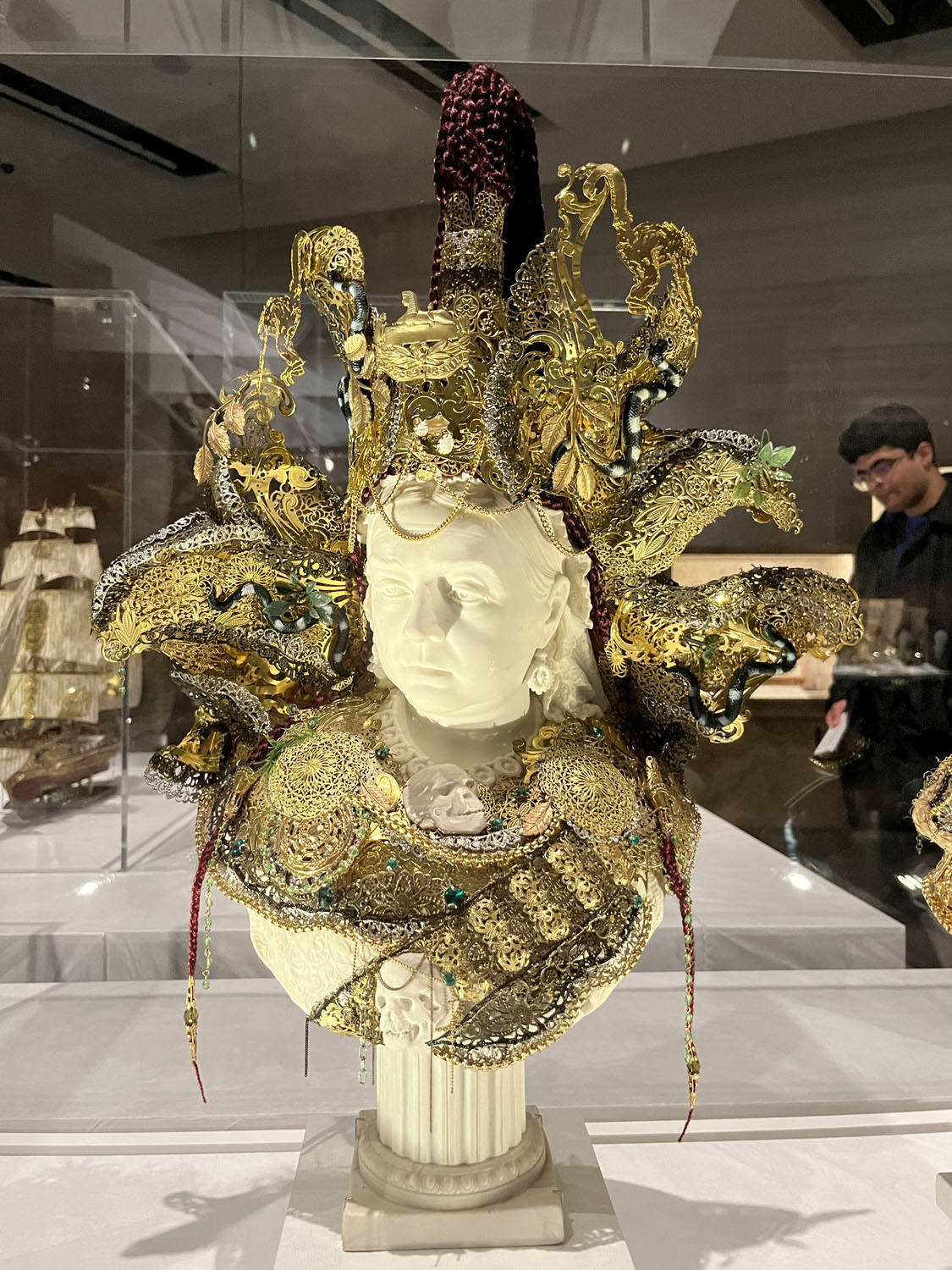
The title 'What have we here?’ further exemplifies the idea of treasure. We as viewers are therefore put in the position of a soldier in the hull of a ship, in and amongst the crates that we have just stolen, being watched and forced to think of what we have done. This is how Locke enforces a rethinking of the objects and how they came to be part of the British Museum, by mimicking the very way they made their journey there.
Locke cheekily pokes fun at the British Museum’s collection of indigenous pieces collected over centuries of naval superiority which morphed into the largest Empire in history.
Cass, A Level Art History student
Cass writes:
The exhibition sent a very clear message through an immersive and poignant critique of British imperialism and colonialism in general. Locke, a British-Guyanese ‘post-colonial hybrid’ artist used a relatively small area within the vast collection of trophies from British Imperialism to provide a stark contrast. The shipping crates, lack of continuity and lack of context shown through the liminal physical space gave me an overwhelming sense of unethical thievery. Behind one of the glass shelving units framed in iron poles and coarse packing boards is an assortment of weapons. A replica Maxim gun, which used to mow down thousands of indigenous African people stands next to traditional spears and shields, a stark reminder of the millennia-long tribes and communities the British destroyed in under 40 minutes (in reference to the 38 minute Zanzibar war).
The scattering of different continents and time zones lacks a sense of depth and clarity, but this is the point. Locke cheekily pokes fun at the British Museum’s collection of indigenous pieces collected over centuries of naval superiority which morphed into the largest Empire in history. Whilst it’s almost impossible to give fresh minds an extensive look into the negative aspects of British colonial history, Locke was able to use a mixture of his own art pieces based on imperial and indigenous items curated in an extremely fluid way to spark a real curiosity in the viewer which could be further fed by the great selection of books available at the exhibition. Overall, Locke was able to use an alcove of the British Museum to give a truly effective critique of the British Empire accessible to all.
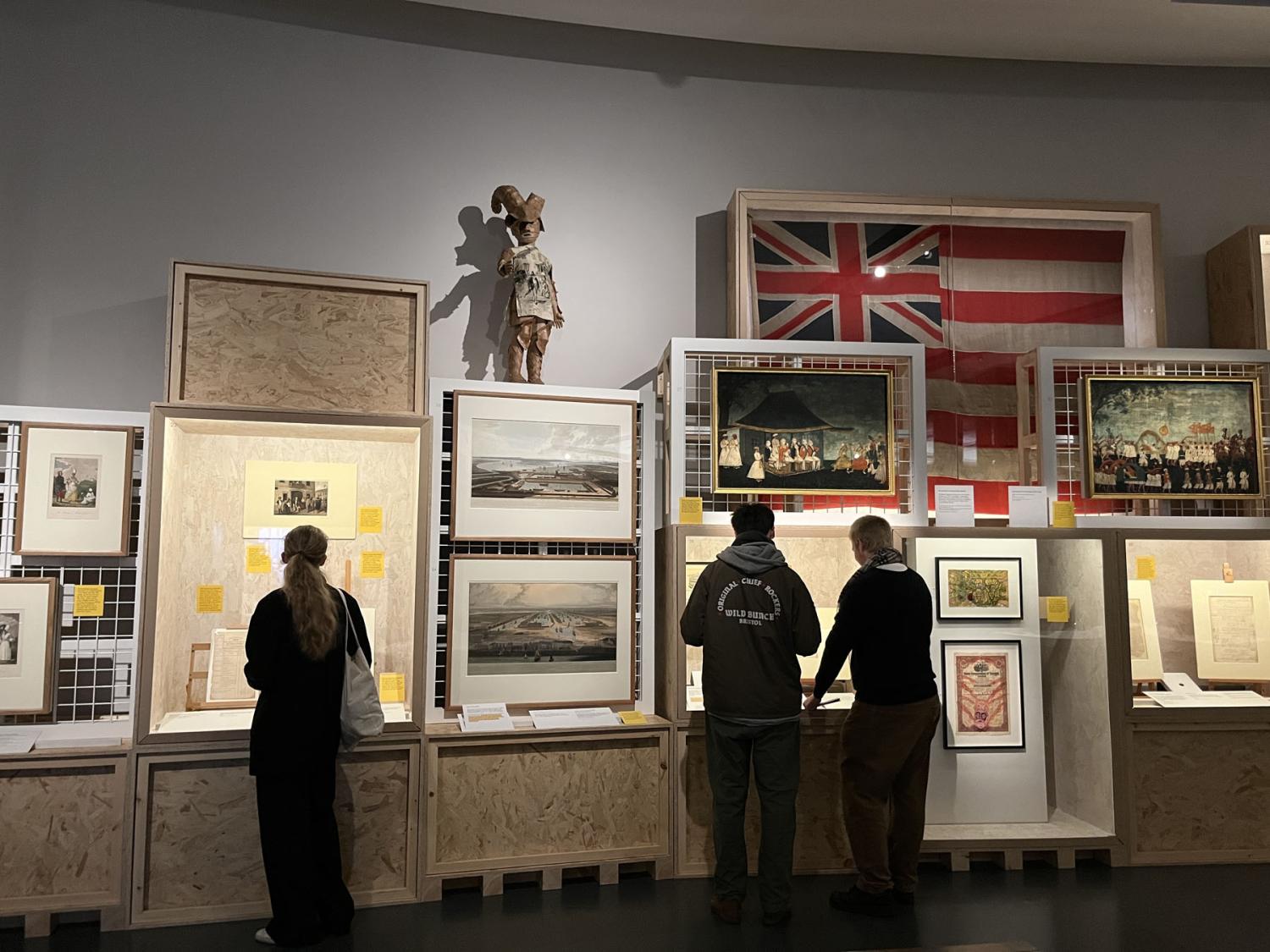
Ms Kroes:
As part of the exhibition, Locke created a series of sculptures called ‘The Watchers’. They were placed around the room, peeking out over crates and watching us as we looked at the objects. The figures wore bright colours and patterns, reminiscent of Carnival costumes, linking to Locke’s heritage, and the commission he received from the Tate Britain last year titled last year’s ‘The Procession’. They stand out from the shadowy surroundings, challenging us to react.
Zeno writes:
From the perspective of a viewer, the exhibition space sparked a sense of curiosity as Locke managed to create a visually impactful arrangement of global artefacts. I was quick to notice that many of these interesting elements were misunderstood. The visual allure of objects such as the coral headdresses, or the fascinating weapons were deceiving. Being placed in the position of a pillager aboard the ship, his cargo- like setting and the ornately decorated ‘Watchers’ which judged me head-on instilled a sense of guilt as I innocently observed these artefacts. Locke managed to contextualise these artefacts to create an impactful, educational narrative of history. During this exhibition I began to question myself, wondering why these artefacts were here. And after what I had just learnt, did they even deserve to be here? The exhibition was like a time machine, taking the viewer back to the moment the artefacts were taken away by British soldiers, begging the question of whether it was rightful, and if not, should they be returned now?
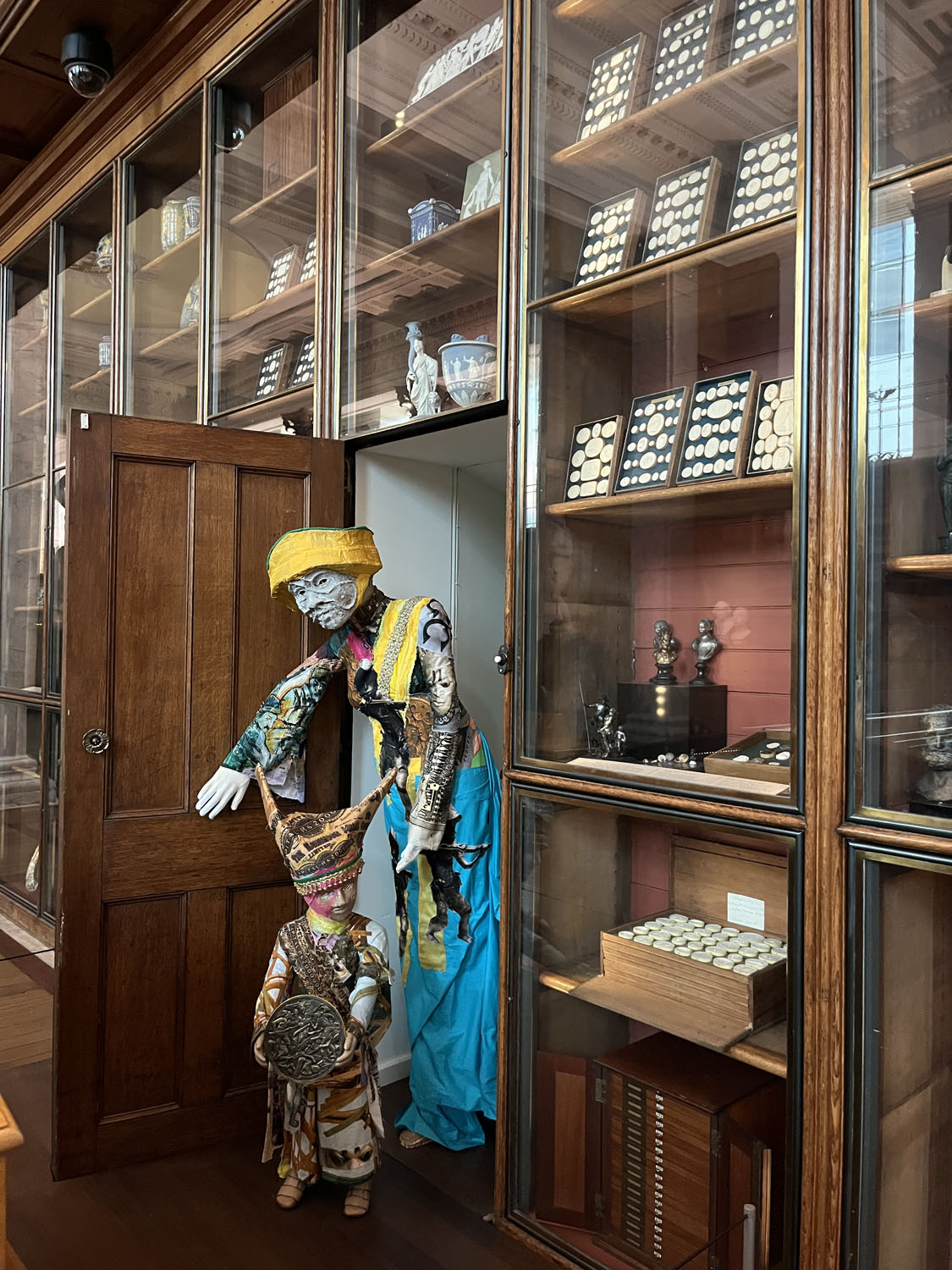
Ms Kroes:
The exhibition helped us to debate the question of repatriation further. As the most controversial topic in the museum world at the moment, we wanted to consider where we stood – should these objects, more specifically the Benin Bronzes, be sent back to their home countries?
Eliot writes:
For Africa to stride forward into a truly post-colonial world, I believe it is very important for the Benin plaques to return to Nigeria. These plaques are a symbol of the Benin Empire in modern-day Nigeria and are a key tool to promoting cultural pride as they show the sophistication and wealth that the empire created.
Cass writes:
Population forecasts predict that by 2050 Nigeria will be the third most populated country in the world due to its population growth. In the same regard that we as kids are taught about the pre-industrial Elizabethan, Tudor, Stuart eras etc, Nigerian kids must have a visually empowering understanding of the rich history of their country before the egregious acts of the British Empire took place. Conversely, London being the cosmopolitan landscape it is, Nigerian people in London deserve to have their roots close to them in order to celebrate their heritage. Unfortunately however, the signs of colonial looting are still extremely visible in the British Museum as we can see the marks of where the plaques were ripped off the walls of the Oba’s palace and taken by British soldiers.
I believe it is very important for the Benin plaques to return to Nigeria. These plaques are a symbol of the Benin Empire in modern-day Nigeria and are a key tool to promoting cultural pride as they show the sophistication and wealth that the empire created.
Eliot, Harrodian Sixth Former
Ms Kroes:
Our visit to the museum correlated with our study of a module in the History of Art A level called ‘Identities’. In it, we consider the importance of identity in art. We think about the identity of the artists, the subjects, and the viewers, and how these things contribute to the meaning of a work. Our study of the Benin plaques has helped us to understand how expressions of identity can change over time and with the circumstances, and that display location deeply impacts the meaning of an artwork. The ability to critically analyse an artwork for not only what it depicts but how it was made and displayed is a critical component of our A level course, encapsulated perfectly in the layers of history within the Benin bronzes.

